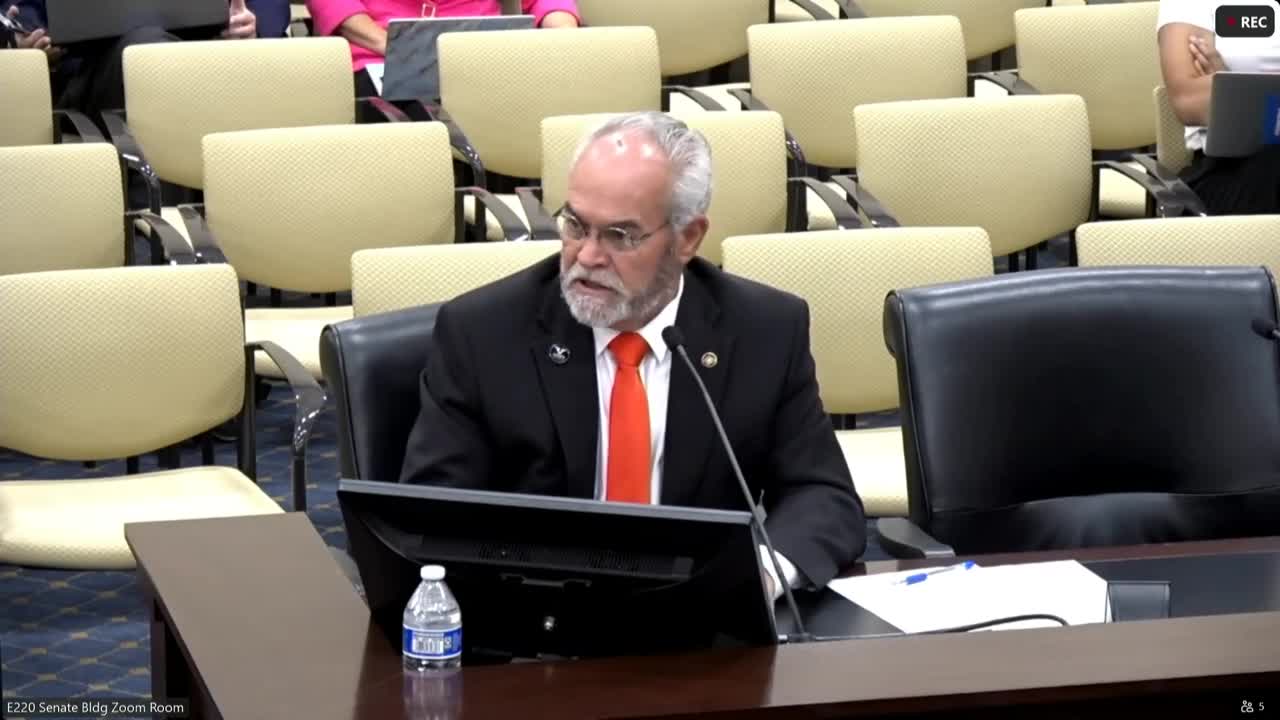Senator Winterton proposes county classification reform to assess revenue and population criteria
September 16, 2025 | 2025 Utah Legislature, Utah Legislature, Utah Legislative Branch, Utah
This article was created by AI summarizing key points discussed. AI makes mistakes, so for full details and context, please refer to the video of the full meeting. Please report any errors so we can fix them. Report an error »

In a recent meeting of the Political Subdivisions Interim Committee, members gathered to discuss pressing issues surrounding county classifications in Utah. The atmosphere was charged with a sense of urgency as lawmakers recognized the need for a comprehensive review of how counties are classified based on population and revenue.
Senator Winterton opened the discussion by highlighting a long-standing issue: the current classification system, which categorizes counties from first to sixth class based on population, has not been adequately addressed for years. He pointed out that the state has repeatedly raised the population thresholds to prevent counties from moving up in classification, which has led to a disconnect between the services provided by second-class counties and the expectations placed upon them.
The senator emphasized that many second-class counties are now offering services comparable to those of first-class counties, yet they do not have the same financial accountability. "If a county can afford it, they shouldn't be coming to the state for a handout," he stated, advocating for a system that considers revenue alongside population when determining classifications. This shift could potentially relieve the state from providing incentives to counties that are financially capable of supporting their own economic growth.
The committee members engaged in a thoughtful dialogue about the implications of reclassifying counties. They acknowledged that the current system may not reflect the realities of county capabilities and needs. The senator proposed opening a committee bill file to further study this issue, aiming to modernize the classification system and ensure it aligns with the current economic landscape.
As the meeting progressed, the committee recognized the complexity of the task ahead. With a commitment to tackle this "moldy year" issue, they expressed a desire to clean up the classification system and make it more equitable for all counties in Utah. The discussions underscored a pivotal moment for local governance, as lawmakers seek to adapt to changing demographics and economic conditions while ensuring that all counties can thrive without excessive reliance on state support.
Senator Winterton opened the discussion by highlighting a long-standing issue: the current classification system, which categorizes counties from first to sixth class based on population, has not been adequately addressed for years. He pointed out that the state has repeatedly raised the population thresholds to prevent counties from moving up in classification, which has led to a disconnect between the services provided by second-class counties and the expectations placed upon them.
The senator emphasized that many second-class counties are now offering services comparable to those of first-class counties, yet they do not have the same financial accountability. "If a county can afford it, they shouldn't be coming to the state for a handout," he stated, advocating for a system that considers revenue alongside population when determining classifications. This shift could potentially relieve the state from providing incentives to counties that are financially capable of supporting their own economic growth.
The committee members engaged in a thoughtful dialogue about the implications of reclassifying counties. They acknowledged that the current system may not reflect the realities of county capabilities and needs. The senator proposed opening a committee bill file to further study this issue, aiming to modernize the classification system and ensure it aligns with the current economic landscape.
As the meeting progressed, the committee recognized the complexity of the task ahead. With a commitment to tackle this "moldy year" issue, they expressed a desire to clean up the classification system and make it more equitable for all counties in Utah. The discussions underscored a pivotal moment for local governance, as lawmakers seek to adapt to changing demographics and economic conditions while ensuring that all counties can thrive without excessive reliance on state support.
View full meeting
This article is based on a recent meeting—watch the full video and explore the complete transcript for deeper insights into the discussion.
View full meeting

